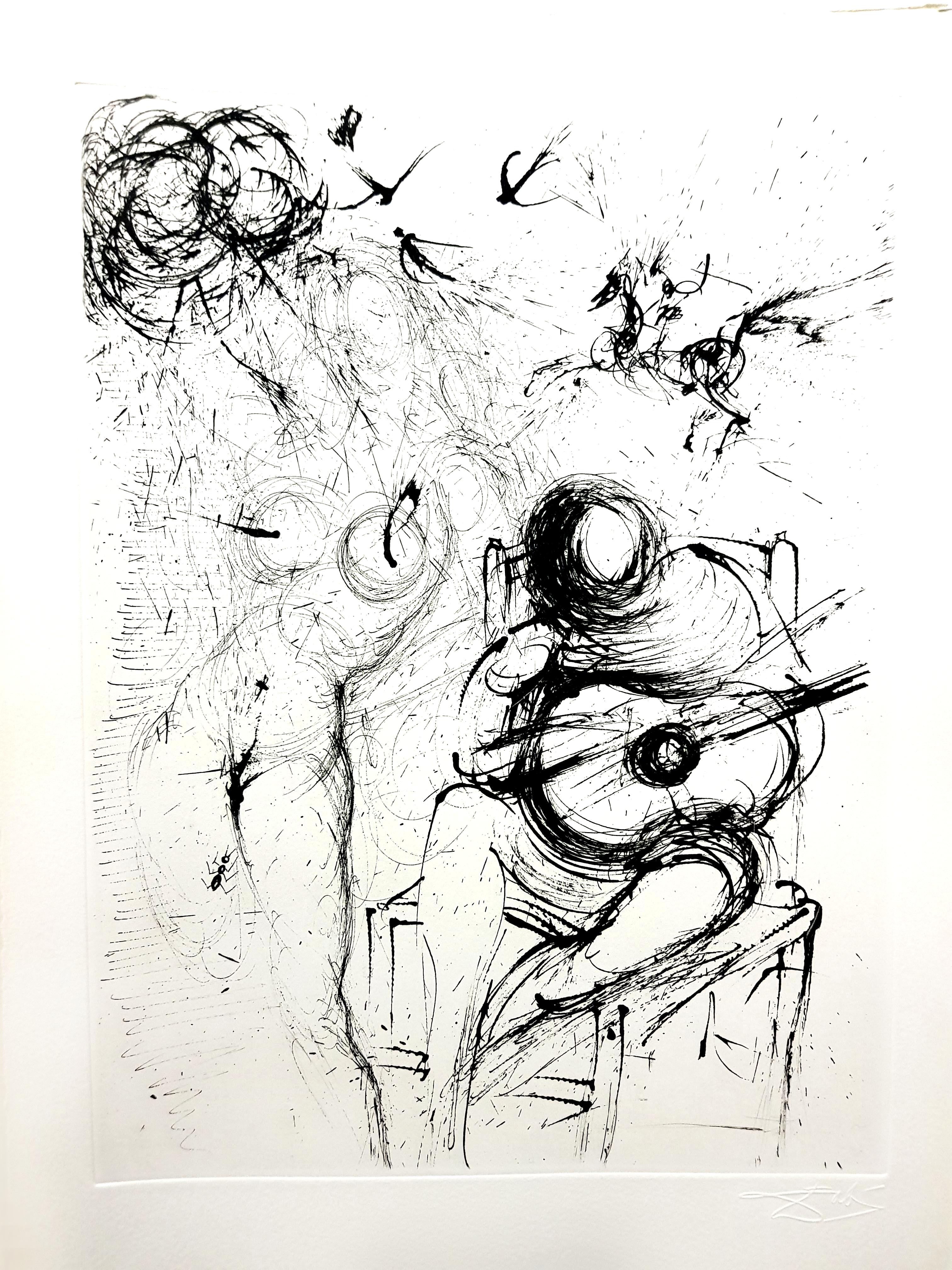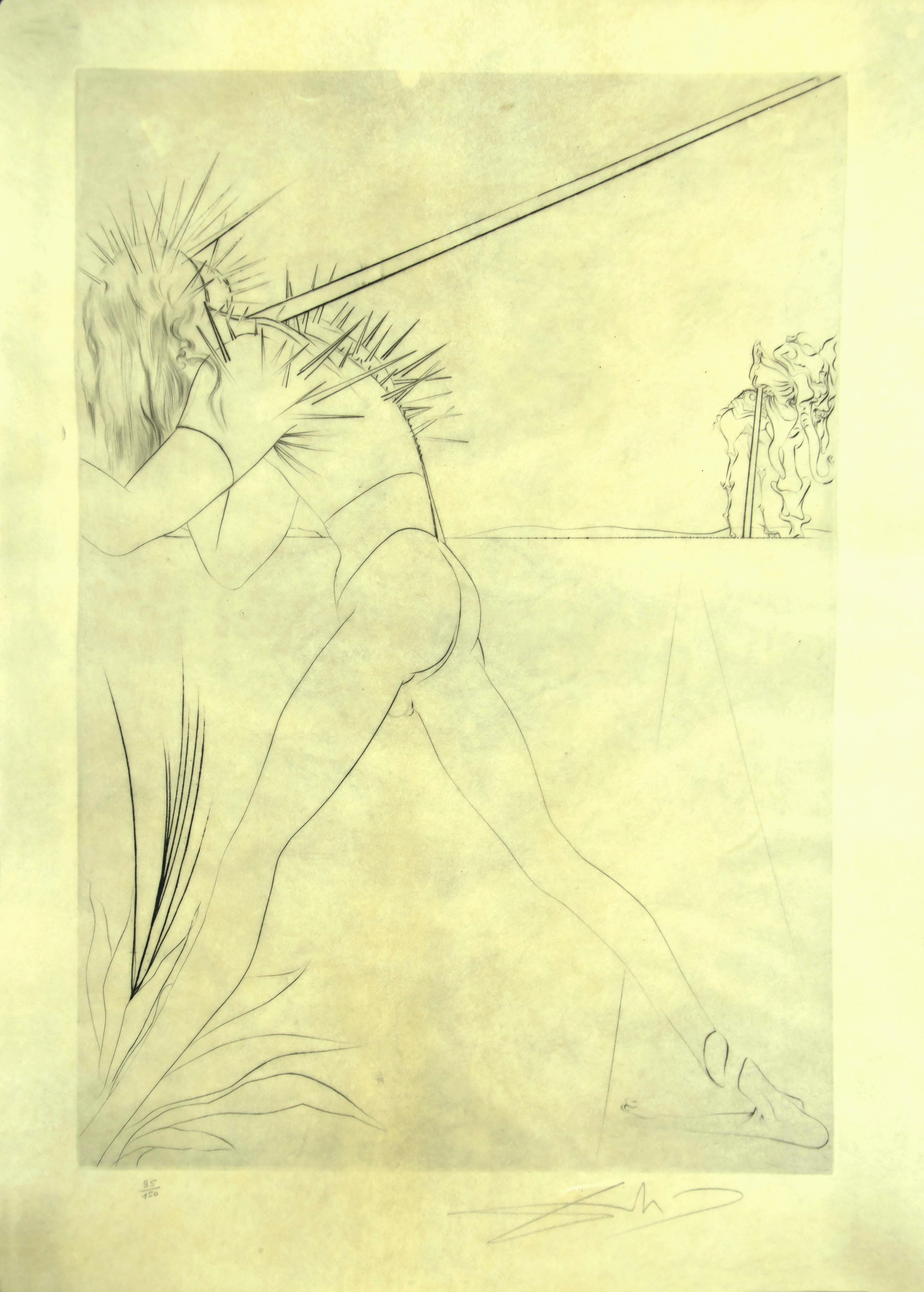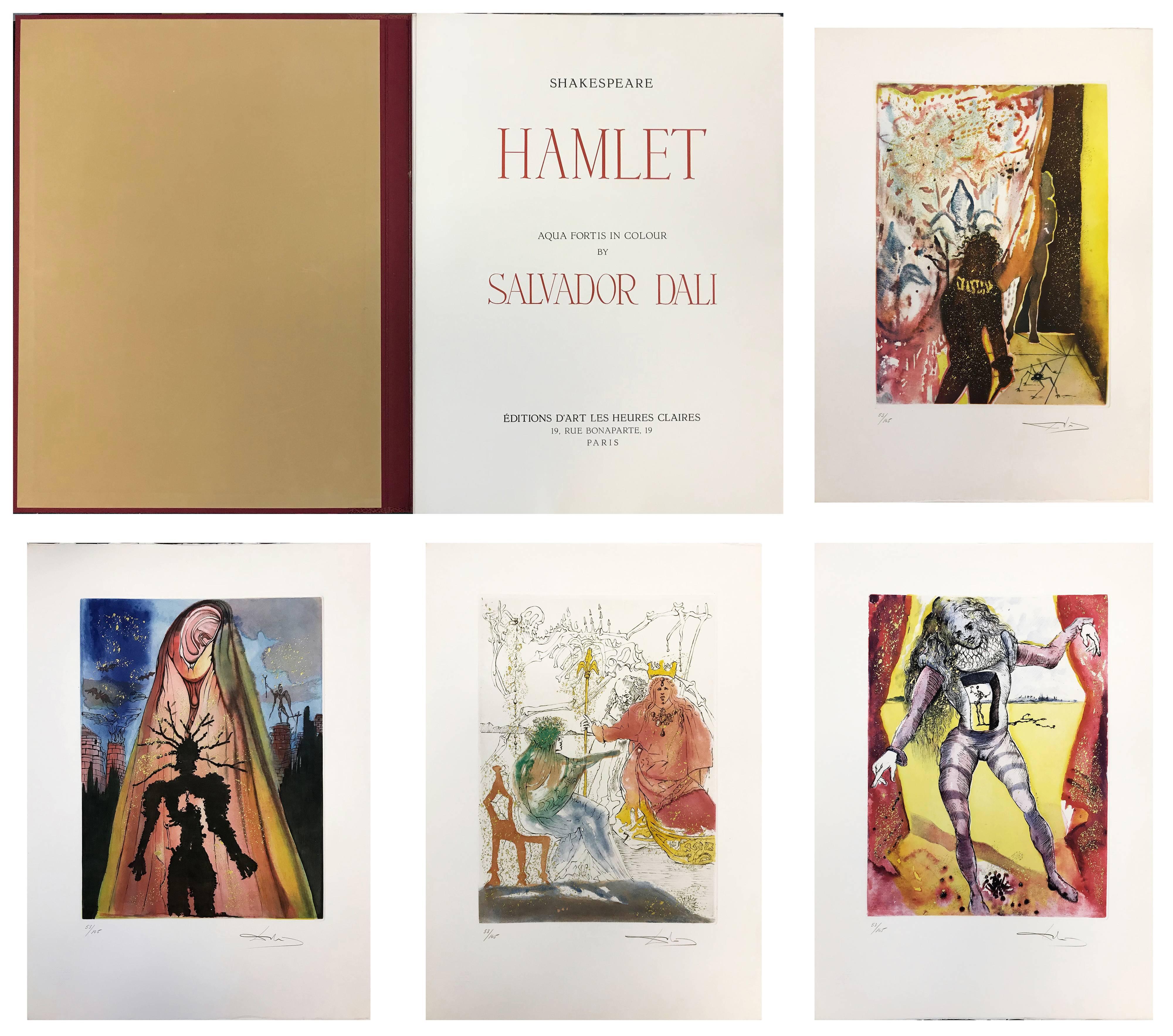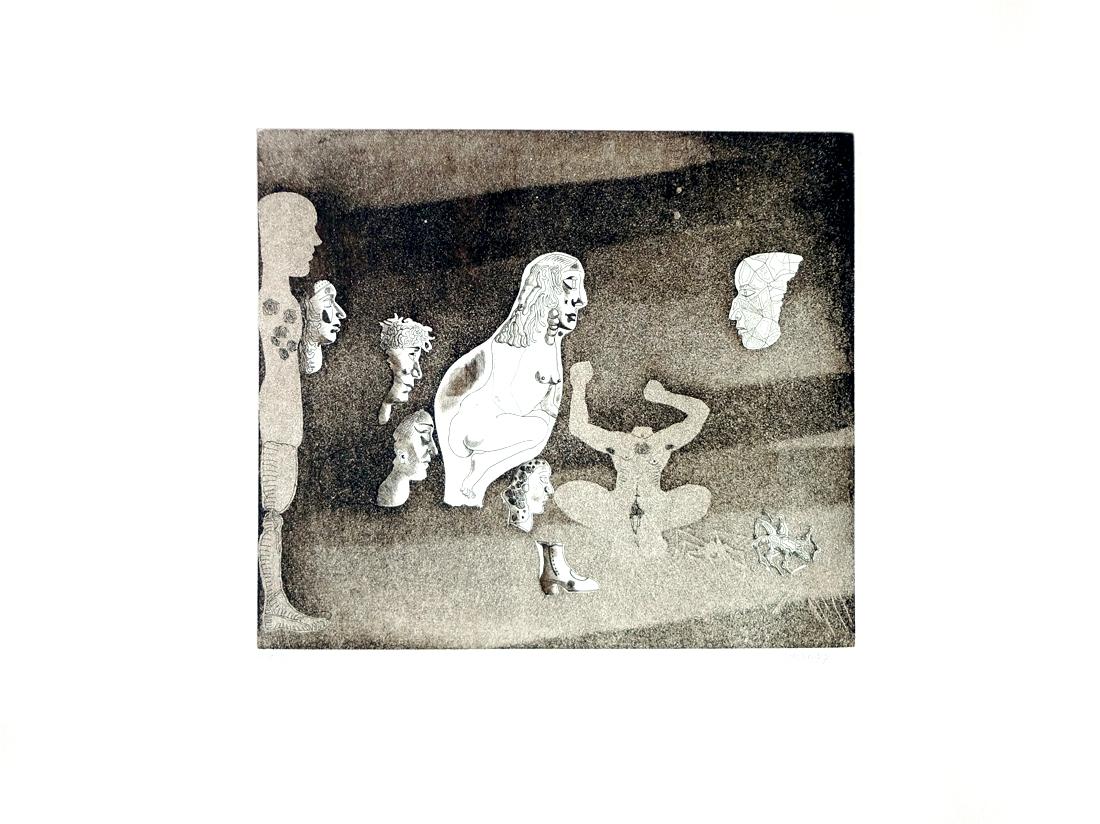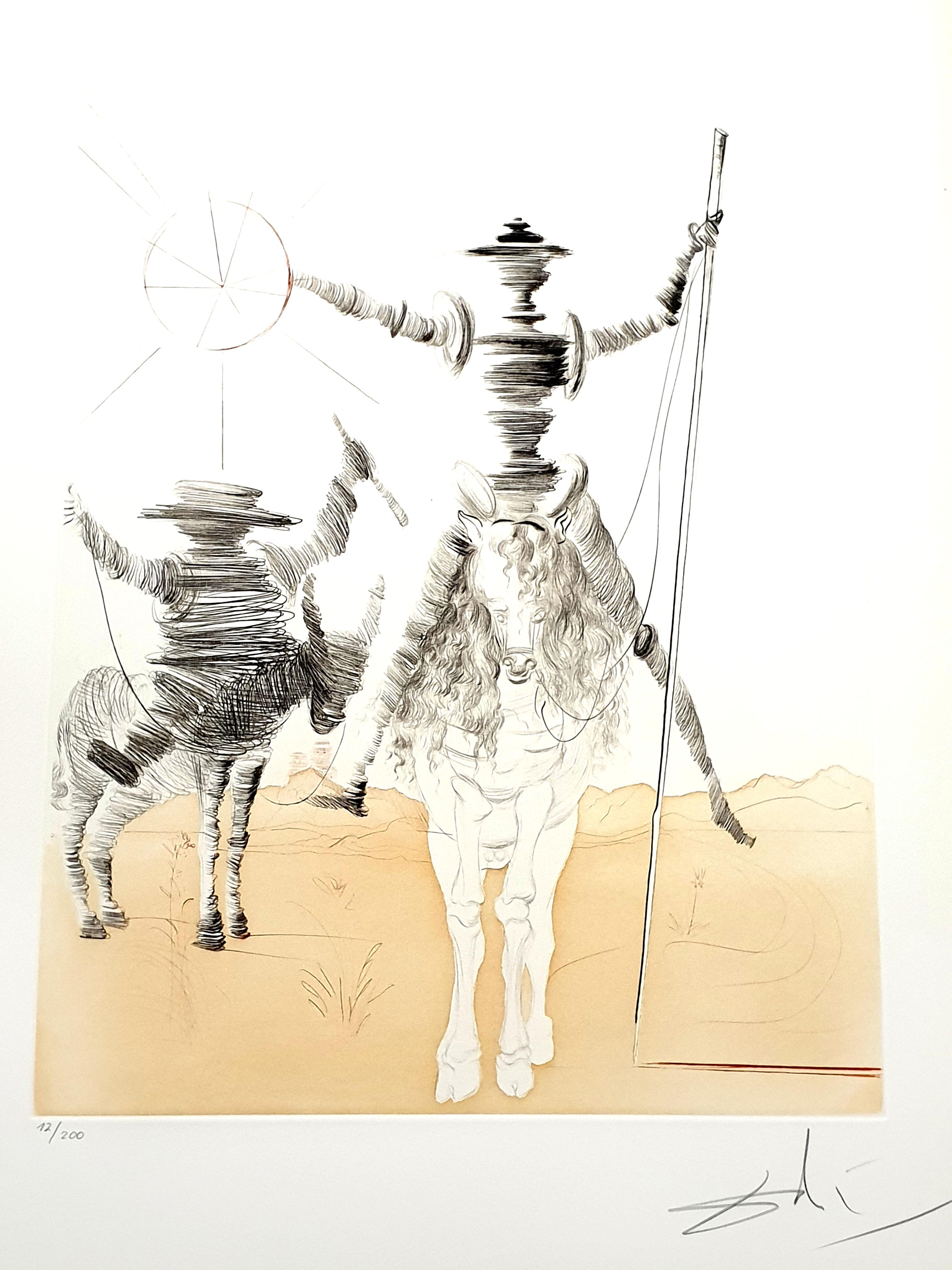Léopold SurvageLe Cheval (The Horse) — Mid-Century Cubism1953
1953
About the Item
- Creator:Léopold Survage (1879-1968)
- Creation Year:1953
- Dimensions:Height: 7.63 in (19.39 cm)Diameter: 5.5 in (13.97 cm)
- Medium:
- Movement & Style:
- Period:
- Condition:
- Gallery Location:Myrtle Beach, SC
- Reference Number:
Léopold Survage
At a young age, Léopold Survage was directed to enter the piano factory operated by his Finnish father. He learned to play piano and then completed a commercial diploma in 1897. After a severe illness at the age of 22, Survage rethought his career and entered the Moscow School of Painting, Sculpture and Architecture. Introduced to the modern movement through the collections of Sergei Shchukin and Ivan Morozov, he cast his lot with the Russian avant-garde and, by 1906, was loosely affiliated with the circle of the magazine Zolotoye runo. He met Alexander Archipenko, exhibiting with him in the company of David Burlyuk, Vladimir Burlyuk, Mikhail Larionov and Natalia Goncharova.
With Hélène Moniuschko, later his wife, he traveled to Western Europe, visiting Paris in July 1908. The couple eventually settled in Paris where Survage worked as a piano tuner and briefly attended the short-lived school run by Henri Matisse. He exhibited with the Jack of Diamonds group in Moscow in 1910 and first showed his work in France at the urging of Archipenko in the Salon d'Automne of 1911. In 1913, Survage produced abstract compositions using color and movement to evoke a type of musical sensation. Entitled Rythmes colorés, he planned to animate these illustrations using film to form "symphonies en couleur". He saw these abstract images as flowing together, but he exhibited the ink wash drawings separately at the Salon d'Automne in 1913 and Salon des Indépendants in 1914. Articles on these works were published by Guillaume Apollinaire (Paris-J., July 1914) and Survage himself (Soirées Paris, July–August 1914).
In June 1914, to develop his idea, Survage unsuccessfully applied for a patent to the Gaumont Film Company. Had he been able to raise the funds, he would have preceded Viking Eggeling and Hans Richter as the first to develop abstract films. Beginning in 1917, Survage shared a studio and a penchant for alcoholic excesses with Amedeo Modigliani in Paris. Survage later moved to Nice and, over the next eight years, produced highly structured oils and works on paper linked together by a series of leitmotifs, repeating groups of symbolic elements—man, sea, building, flower, window, curtain, bird as if they were protagonists in a series of moving images. The influence may have been Marc Chagall's, an artist well known for his insertions of floating couples, cows, roosters, and sundry Jewish iconography. By 1922, Survage had begun to move away from Cubism in favor of the neo-classical form. He was perhaps influenced by commissions for Serge Diaghilev's Ballets Russes, beginning with sets and costumes for Igor Stravinsky's opera buffa Mavra at the Paris Opéra in 1922. Although mainly a painter, he also produced stage, tapestry, and textile designs during this period (notably for the house of Chanel in 1933). Toward the end of the 1930s, as a result of his contact with André Masson, Survage became increasingly charmed by symbols and mysticism. The curvilinear forms that had previously dominated his compositions came, once again, under the control of the geometric structure. Survage was inducted into France's Légion d'Honneur in 1963. He died on 31 October 1968 in Paris.
- ShippingRetrieving quote...Ships From: Myrtle Beach, SC
- Return PolicyA return for this item may be initiated within 7 days of delivery.
- 'Fantasia Americana - 1880' — Mid-Century American SurrealismBy Lawrence KupfermanLocated in Myrtle Beach, SCLawrence Kupferman, 'Fantasia Americana – 1880', drypoint etching with sandground, 1943. Signed, titled, and annotated 'Series A, 1971 2/6' in pencil. A superb, richly-inked impression, on heavy, cream wove paper, with full margins (2 1/2 to 3 1/2 inches); the paper slightly lightened within the original mat opening, otherwise in excellent condition. One of only 6 impressions printed in 1971, with the added sandground grey background tint. Image size 11 13/16 x 14 3/4 inches; sheet size 18 x 20 1/4 inches. Archivally matted to museum standards, unframed. Collections: National Gallery of Art, Zimmerli Art Museum (Rutgers University). ABOUT THE ARTIST Lawrence Kupferman (1909 - 1982) was born in the Dorchester neighborhood of Boston and grew up in a working-class family. He attended the Boston Latin School and participated in the high school art program at the Museum of Fine Arts, Boston. In the late 1920s, he studied drawing under Philip Leslie Hale at the Museum School—an experience he called 'stultifying and repressive'. In 1932 he transferred to the Massachusetts College of Art, where he first met his wife, the artist Ruth Cobb. He returned briefly to the Museum School in 1946 to study with the influential expressionist German-American painter Karl Zerbe. Kupferman held various jobs while pursuing his artistic career, including two years as a security guard at the Museum of Fine Arts, Boston. During the 1930s he worked as a drypoint etcher for the Federal Art Project, creating architectural drawings in a formally realistic style—these works are held in the collections of the Fogg Museum and the Smithsonian American Art Museum. In the 1940s he began incorporating more expressionistic forms into his paintings as he became progressively more concerned with abstraction. In 1946 he began spending summers in Provincetown, Massachusetts, where he met and was influenced by Mark Rothko, Hans Hofmann, Jackson Pollock, and other abstract painters. At about the same time he began exhibiting his work at the Boris Mirski Gallery in Boston. In 1948, Kupferman was at the center of a controversy involving hundreds of Boston-area artists. In February of that year, the Boston Institute of Modern Art issued a manifesto titled 'Modern Art and the American Public' decrying 'the excesses of modern art,' and announced that it was changing its name to the Institute of Contemporary Art (ICA). The poorly conceived statement, intended to distinguish Boston's art scene from that of New York, was widely perceived as an attack on modernism. In protest, Boston artists such as Karl Zerbe, Jack Levine, and David Aronson formed the 'Modern Artists Group' and organized a mass meeting. On March 21, 300 artists, students, and other supporters met at the Old South Meeting House and demanded that the ICA retract its statement. Kupferman chaired the meeting and read this statement to the press: “The recent manifesto of the Institute is a fatuous declaration which misinforms and misleads the public concerning the integrity and intention of the modern artist. By arrogating to itself the privilege of telling the artists what art should be, the Institute runs counter to the original purposes of this organization whose function was to encourage and to assimilate contemporary innovation.” The other speakers were Karl Knaths...Category
1940s Surrealist Figurative Prints
MaterialsDrypoint, Etching
- 'On Stage' — Mid-Century Surrealism, Atelier 17Located in Myrtle Beach, SCIan Hugo, 'On Stage', from the portfolio 'Ten Engravings'. engraving, 1946, edition 50. Signed, dated, titled, and numbered '22/50' in pencil. A fine impression, with delicate overall plate tone, on cream wove paper, the full sheet with margins (3 5/8 to 4 7/8 inches), in excellent condition. With the blind stamp 'madeleine-claude jobrack EDITIONS', in the bottom right margin. Matted to museum standards, unframed. Image size 5 7/8 x 3 7/8 inches (149 x 98 mm); sheet size 15 1/8 x 11 1/8 inches (384 x 283 mm). Ian Hugo originally created "Ten Engravings" in 1945, and the portfolio included a foreword by his partner and collaborator, Anais Nin. In 1978, Hugo republished the portfolio with Madeleine-Claude Jobrack, an American master printmaker who studied under Stanley William Hayter at Atelier 17, Paris, and with Johnny Friedlaender. When Jobrack returned to the United States she managed the Robert Blackburn Printmaking Studio in New York before opening her own printing studio, Madeleine-Claude Jobrak Editions. “The sign of the true artist is one who creates a complete universe, invents new plants, new animals, new figures to transfer to us a new vision of the universe in which dream and reality fuse. Ian Hugo's plants have eyes, the birds have the delicacy of dragonflies, their feathers have the shape of fans. Humor is apparent in every gesture. He uses a fine spider web to give a feeling of flight, speed, lightness. The body of a woman reveals the structure of a leaf, a plant. Wings are moving in a world unified by mythological themes. This is an animated world, humorous and levitating, elusive and decorative, which by its unique forms and shapes gives us the sensation of a rebirth, a liberation from the usual, the familiar, a visit to a new planet.” —Anais Nin, from the forward to the portfolio ‘Ten Engravings’ ABOUT THE ARTIST Ian Hugo was born Hugh Parker Guiler in Boston, Massachusetts, on February 15, 1898. His childhood was spent in Puerto Rico—a "tropical paradise," the memory of which stayed with him and surfaced in both his engravings and his films. He attended school in Scotland and graduated from Columbia University where he studied economics and literature. Hugo was working with the National City Bank when he met and married author Anais Nin in 1923. The couple moved to Paris the following year, where Nin's diary and Guiler's artistic aspirations flowered. Guiler feared his business associates would not understand his interests in art and music, let alone those of his wife, so he began a second, creative life as Ian Hugo. Ian and Anais moved to New York in 1939. The following year he took up engraving and etching, working at Stanley William Hayter’s experimental printmaking workshop Atelier 17, established at the New School for Social Research. Hugo began producing surreal images often used to illustrate Nin's books. For Nin, his unwavering love and financial support were indispensable—Hugo was the "fixed center, core... my home, my refuge" (Sept. 16, 1937, Nearer the Moon, The Unexpurgated Diary of Anais Nin, 1937-!939). Fictionalized portraits of Higo and Nin appear in Philip Kaufman's 1990 film drama of a literary love triangle, Henry & June. Inspired by comments that viewers saw motion in his engravings, Hugo took up filmmaking. He asked the avant-garde filmmaker Sasha Hammid for instruction but was told, "Use the camera yourself, make your own mistakes, make your own style." Hugo embarked on an exploration of the film medium as a vehicle to delve into his dreams, his unconscious, and his memories. Without a specific plan, He would collect resonant images, then reorder or superimpose them, seeking a sense of self-connection through the poetic juxtapositions he created. These intuitive explorations resembled the mystical evocations of his engravings, which he described in 1946 as "hieroglyphs of a language in which our unconscious is trying to convey important, urgent messages." In the underwater world of his film ‘Bells of Atlantis,’ the light originates from the world above the surface; it is otherworldly, out of place, yet essential. In ‘Jazz of Lights,’ the street lights of Times Square become in Nin's words, "an ephemeral flow of sensations." This flow that she also calls "phantasmagorical" had a crucial impact on Stan Brakhage, who said that without Jazz of Lights (1954), "there would have been no Anticipation of the Night" his autobiographical film which ushered in a new era of experimental modernist filmmaking. Hugo lived the last two decades of his life in a New York apartment high above street level. In the evenings, surrounded by an electrically illuminated man...Category
1940s Surrealist Figurative Prints
MaterialsEngraving
- 'Together' — Mid-Century Surrealism, Atelier 17Located in Myrtle Beach, SCIan Hugo, 'Together', from the portfolio 'Ten Engravings'. engraving, 1946, edition 50. Signed, dated, titled, and numbered '22/50' in pencil. A fine impression, with delicate overall plate tone, on cream wove paper, the full sheet with wide margins (2 7/8 to 5 1/2 inches), in excellent condition. With the blind stamp 'madeleine-claude jobrack EDITIONS', in the bottom right margin. Matted to museum standards, unframed. Image size 5 7/8 x 4 7/8 inches (149 x 124 mm); sheet size 15 x 11 1/8 inches (381 x 283 mm). Collection: Indianapolis Museum of Art. Ian Hugo originally created "Ten Engravings" in 1945 and the portfolio included a foreword by his partner and collaborator, Anais Nin. In 1978, Hugo republished the portfolio with Madeleine-Claude Jobrack, an American master printmaker who studied under Stanley William Hayter at Atelier 17, Paris, and with Johnny Friedlaender. When Jobrack returned to the States she managed the Robert Blackburn Printmaking Studio in New York before opening her own printing studio, Madeleine-Claude Jobrak Editions. “The sign of the true artist is one who creates a complete universe, invents new plants, new animals, new figures to transfer to us a new vision of the universe in which dream and reality fuse. Ian Hugo's plants have eyes, the birds have the delicacy of dragonflies, their feathers have the shape of fans. Humor is apparent in every gesture. He uses a fine spider web to give a feeling of flight, speed, lightness. The body of a woman reveals the structure of a leaf, a plant. Wings are moving in a world unified by mythological themes. This is an animated world, humorous and levitating, elusive and decorative, which by its unique forms and shapes gives us the sensation of a rebirth, a liberation from the usual, the familiar, a visit to a new planet.” —Anais Nin, from the forward to the portfolio ‘Ten Engravings’ ABOUT THE ARTIST Ian Hugo was born Hugh Parker Guiler in Boston, Massachusetts, on February 15, 1898. His childhood was spent in Puerto Rico—a "tropical paradise," the memory of which stayed with him and surfaced in both his engravings and his films. He attended school in Scotland and graduated from Columbia University where he studied economics and literature. Hugo was working with the National City Bank when he met and married author Anais Nin in 1923. The couple moved to Paris the following year, where Nin's diary and Guiler's artistic aspirations flowered. Guiler feared his business associates would not understand his interests in art and music, let alone those of his wife, so he began a second, creative life as Ian Hugo. Ian and Anais moved to New York in 1939. The following year he took up engraving and etching, working at Stanley William Hayter’s experimental printmaking workshop Atelier 17, established at the New School for Social Research. Hugo began producing surreal images often used to illustrate Nin's books. For Nin, his unwavering love and financial support were indispensable—Hugo was the "fixed center, core... my home, my refuge" (Sept. 16, 1937, Nearer the Moon, The Unexpurgated Diary of Anais Nin, 1937-!939). Fictionalized portraits of Higo and Nin appear in Philip Kaufman's 1990 film drama of a literary love triangle, Henry & June. Inspired by comments that viewers saw motion in his engravings, Hugo took up filmmaking. He asked the avant-garde filmmaker Sasha Hammid for instruction but was told, "Use the camera yourself, make your own mistakes, make your own style." Hugo embarked on an exploration of the film medium as a vehicle to delve into his dreams, his unconscious, and his memories. Without a specific plan, He would collect resonant images, then reorder or superimpose them, seeking a sense of self-connection through the poetic juxtapositions he created. These intuitive explorations resembled the mystical evocations of his engravings, which he described in 1946 as "hieroglyphs of a language in which our unconscious is trying to convey important, urgent messages." In the underwater world of his film ‘Bells of Atlantis,’ the light originates from the world above the surface; it is otherworldly, out of place, yet essential. In ‘Jazz of Lights,’ the street lights of Times Square become in Nin's words, "an ephemeral flow of sensations." This flow that she also calls "phantasmagorical" had a crucial impact on Stan Brakhage, who said that without Jazz of Lights (1954), "there would have been no Anticipation of the Night" his autobiographical film which ushered in a new era of experimental modernist filmmaking. Hugo lived the last two decades of his life in a New York apartment high above street level. In the evenings, surrounded by an electrically illuminated man...Category
1940s Surrealist Figurative Prints
MaterialsEngraving
- 'Encircled' — Mid-Century Surrealism, Atelier 17Located in Myrtle Beach, SCIan Hugo, 'Encircled', engraving, 1946, edition 50. Signed, dated, titled, and numbered '5/50' in pencil. With the blind stamp 'madeleine-claude jobrack EDIT...Category
1940s Surrealist Figurative Prints
MaterialsEngraving
- 'Forest Woman' — Mid-Century Surrealism, Atelier 17Located in Myrtle Beach, SCIan Hugo, 'Forest Woman', engraving, 1945, edition 50. Signed, dated, titled, and numbered '5/50' in pencil. With the blind stamp 'madeleine-claude jobrack E...Category
1940s Surrealist Figurative Prints
MaterialsEngraving
- 'Mother of All' – Mid-Century Surrealism, Atelier 17Located in Myrtle Beach, SCIan Hugo, 'Mother of All', engraving, 1945, edition 50. Signed, dated, titled, and numbered '48/50' in pencil. With the blind stamp 'madeleine-claude jobrack...Category
1940s Surrealist Figurative Prints
MaterialsEngraving
- Salvador Dali - Nude with Guitar - Original EtchingBy Salvador DalíLocated in Collonge Bellerive, Geneve, CHSalvador Dali - Nude with Guitar - Original Etching Dimensions: 38 x 28 cm Edition: 235 1967 embossed signature On Arches Vellum References : Field 67-10 (p. 34-35)Category
1960s Surrealist Nude Prints
MaterialsEtching
- Il y a Des Soldats - Etching attr. to S. Dalì - 1973By Salvador DalíLocated in Roma, ITIl ya a des Soldats (There are Some Soldiers) is an original etching and drypoint realized by Salvador Dalì in 1973. It belongs to the series "Poi, Je t'Attends à Babylone", a suite ...Category
1970s Surrealist Figurative Prints
MaterialsEtching
- HAMLET SUITEBy Salvador DalíLocated in Aventura, FLThis rare 10 piece series from 1973 is Dali's interpretation of Shakespeare's drama Hamlet. Dali paid homage to Shakespeare in several other works but this suite is considered to be ...Category
1970s Surrealist Figurative Prints
MaterialsLithograph, Engraving, Aquatint, Paper
- Jorge Castillo - EROTIC COMPOSITION Etching on paper Spanish SurrealismBy Jorge CastilloLocated in Madrid, MadridJorge Castillo - COMPOSICIÓN ERÓTICA (Erotic Composition) Date of creation: 1977 Medium: Etching on paper Edition: 75 + 20 E.A. Size: 50 x 65,5 cm Condition: In perfect conditions an...Category
1970s Surrealist Figurative Prints
MaterialsEngraving, Etching
- Jorge Castillo - MARIENZA EN DOMINGO Etching Spanish Surrealism FeminineBy Jorge CastilloLocated in Madrid, MadridJorge Castillo - MARIENZA EN DOMINGO Date of creation: 1972 Medium: Etching on paper Edition: 150 + H.C. Size: 56 x 70 cm Condition: In perfect conditions and never framed Observatio...Category
1970s Surrealist Figurative Prints
MaterialsPaper, Engraving, Etching
- Salvador Dali - Don Quixote and Sancho - Original Hand Signed EtchingBy Salvador DalíLocated in Collonge Bellerive, Geneve, CHRare Original Etching by Salvador Dali Title: Don Quixote and Sancho Signed Dimensions: 76 x 56 cm Edition of 200 on Auvergne 1980 References : Field 68-1 / Michler & Lopsinger 266Category
1980s Surrealist Figurative Prints
MaterialsEtching
